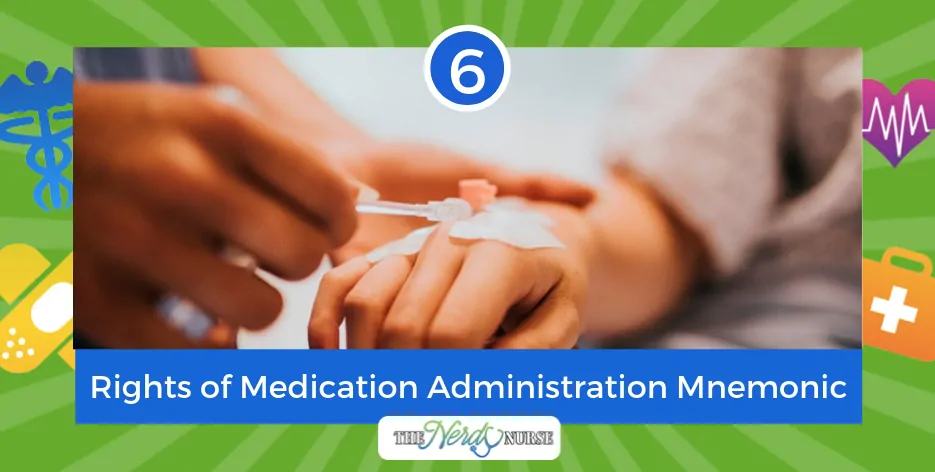Master the rights of medication administration with two easy mnemonics. You’ll need this for medical school and to remember all the important steps of giving medications while on the job.
What are the Rights of Medication Administration?
Before we get into the rights of medication administration mnemonics, it’s important that you understand what they are.
The rights of medication administration are the six things you need to remember before you give a patient any medication. Every single one is just as important as the others on the list. By using this mnemonic, you will be making sure the correct patient is receiving the correct amount of the right medication.
In short, it helps you minimize medication errors. These are the ways to remember the right – or correct – ways to give a patient medication which can help cut down on medication errors.
How Many Rights of Medication Are There?
The most popular and recent update has 6 rights of medication. However, experts have added as many as 10 different rights.
The 6 Rights of Medication Administration are:
- Right Patient
- Right Drug
- Right Dose
- Right Route
- Right Time
- Right Documentation
Georgetown’s Department of Disability Services released these 10 rights of medication:
- Right Patient
- Right Medication
- Right Dose
- Right Time
- Right Route
- Right Education
- Right to Refuse
- Right Assessment
- Right Evaluation
- Right Documentation
They added education, right to refuse, assessment and evaluation to the list.
For this article, we will be using the 6 rights instead of all 10.
What The 6 Rights of Medication Administration Are
Let’s break down each right and understand what it is and why it is so important.
1. Right Patient
Always verify that you have the correct patient before giving them medication. Check the chart but also look at their bracelet and ask them to identify themselves. Some hospitals will actually make you scan their bracelet first so the computer verifies their identity.
2. Right Drug
Make sure you are giving them the correct drug that is on their chart and prescription.
3. Right Dose
Double check the amount of the drug. Is it the correct dosage for their age/size?
4. Right Route
This refers to whether you are administering it orally or intravenously. Don’t rely on your memory or guess, always check the chart.
5. Right Time
How long ago was the previous dosage? Try to stay within 30 minutes of the scheduled dose if you can.
6. Right Documentation
Record everything. Patient, amount of medication and any side effects. Assess and evaluate the patient and make sure they are responding correctly to the medication. If not, record it in the paperwork.
6 Rights of Medication Administration Mnemonic
There are two mnemonics that you can use to remember all of them. They are:
Patients Do Drugs Round The Day (PDDRTD)
In this order, you’ll remember the Right…
- Patient
- Drug
- Dosage
- Route
- Time
- Documentation
DR TIMED
Or you can use DR TIMED to remember the Right…
- Drug
- Route
- Time
- Individual
- Medication
- Effect or expiration date
- Dosage
Whichever one you choose to use, just keep it handy so you prevent accidents. We have so much on our minds already. These mnemonics can help you remember how to administer medication properly.
More Nurse Tips and Guides
Here are some more guides and tips that will help you as you give your all to your job.
- 7 Vital Tips for Avoiding Back Injury as a Nurse
- The New Nurse’s Guide to Paging a Doctor at Night
- Effective Nursing Interventions for Anxiety





